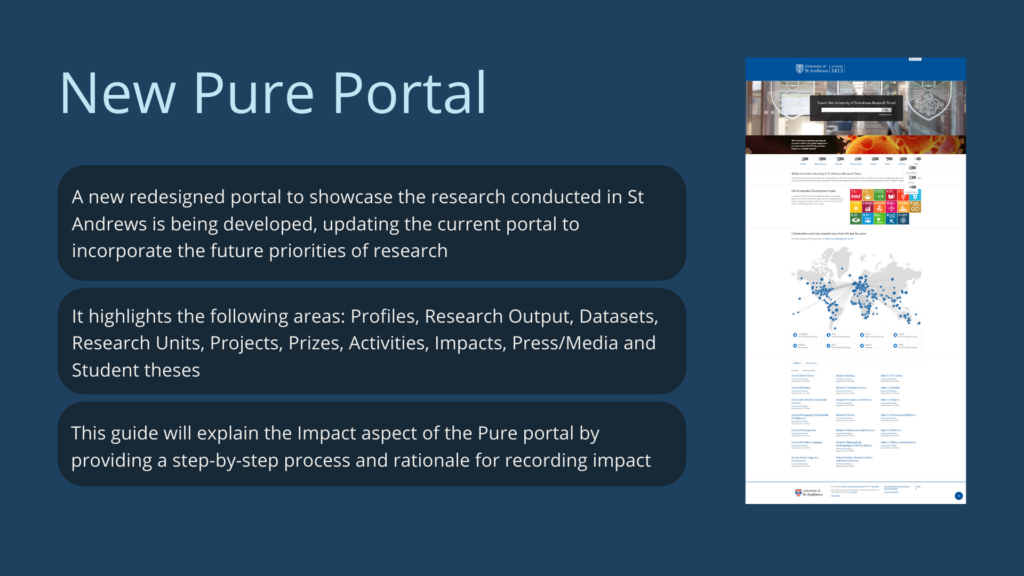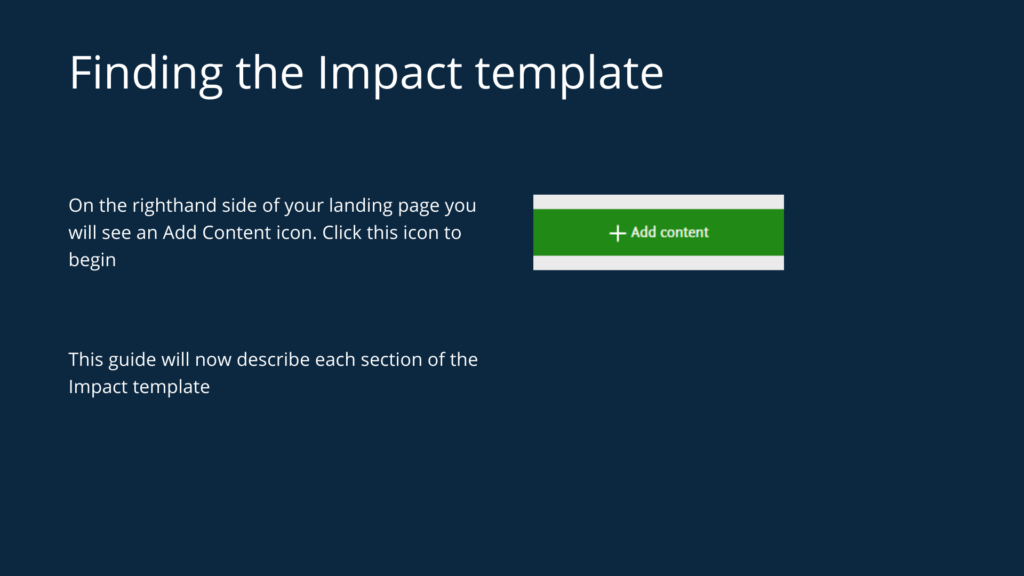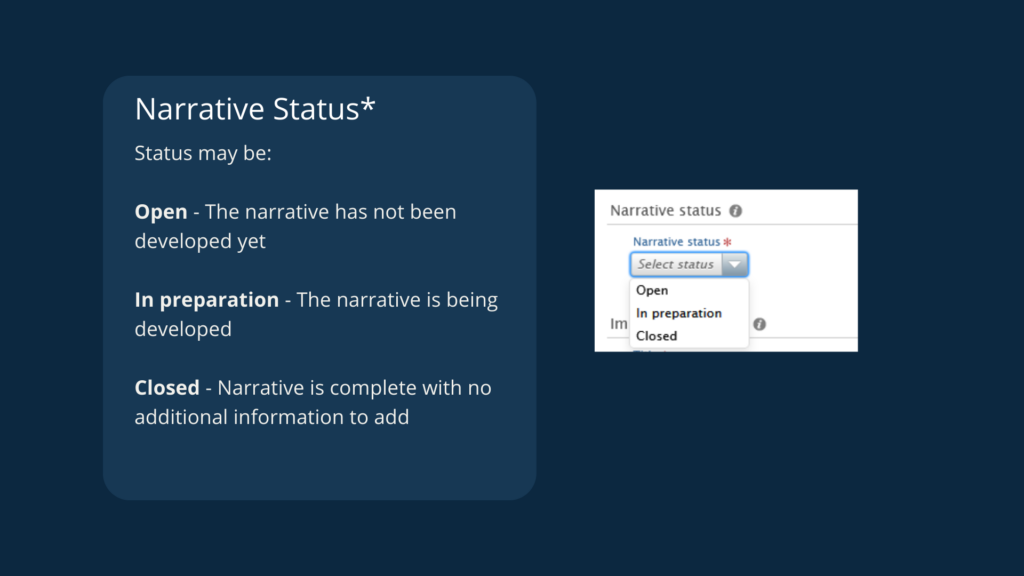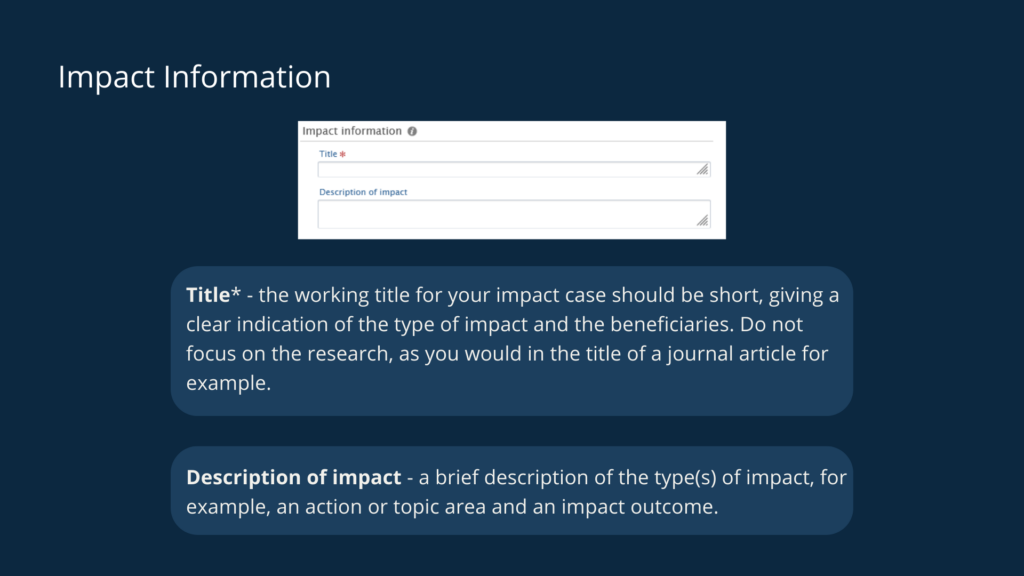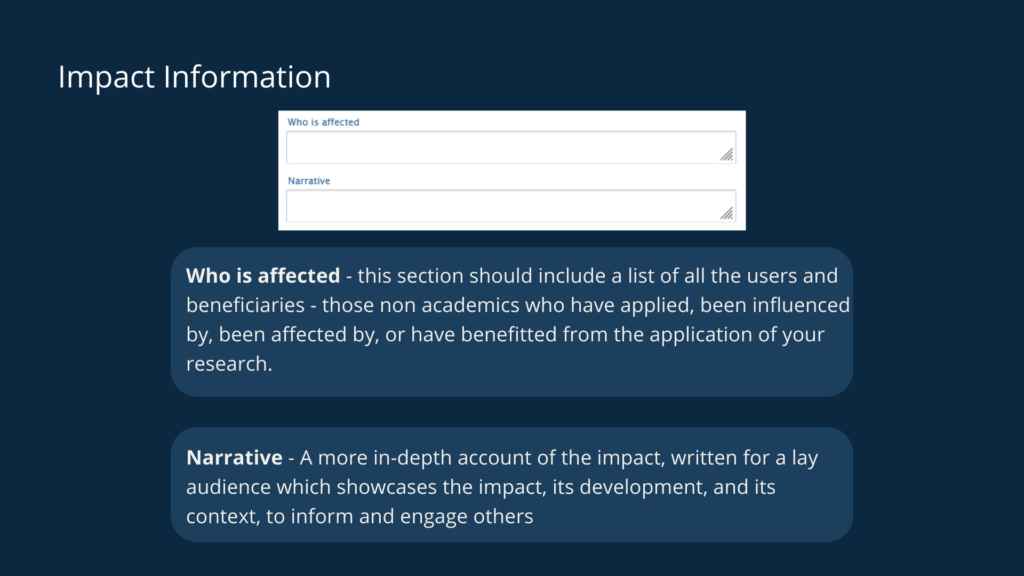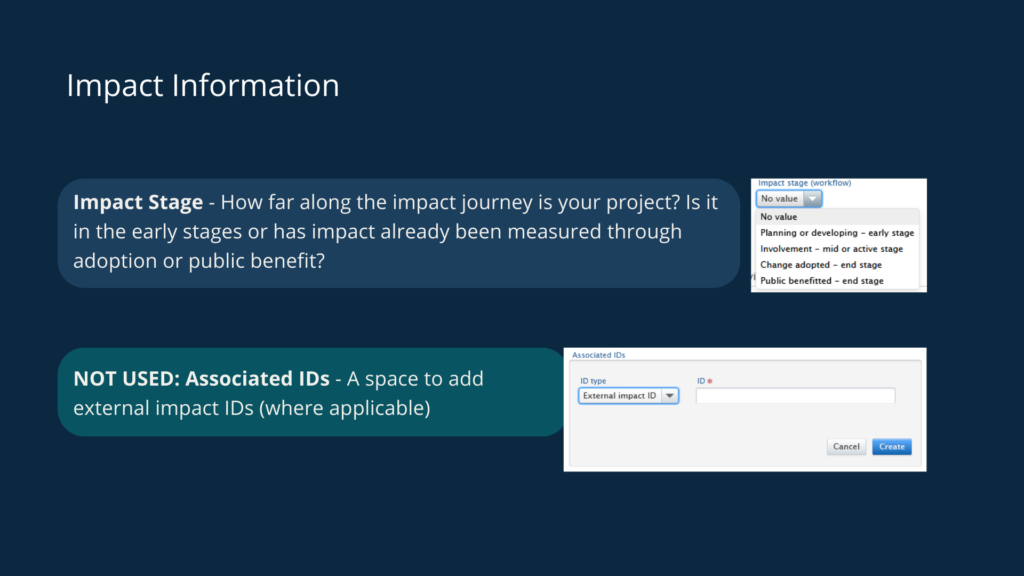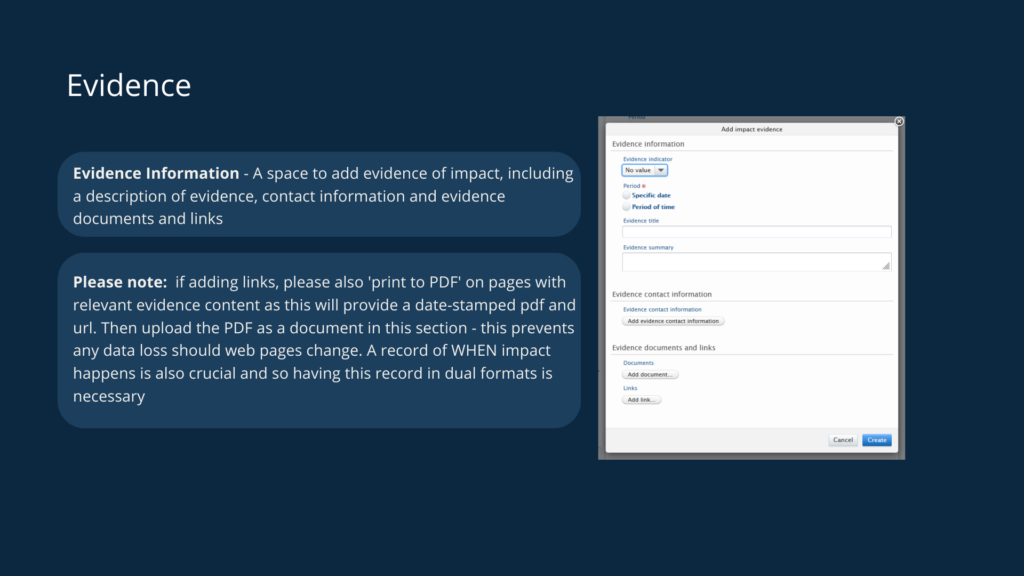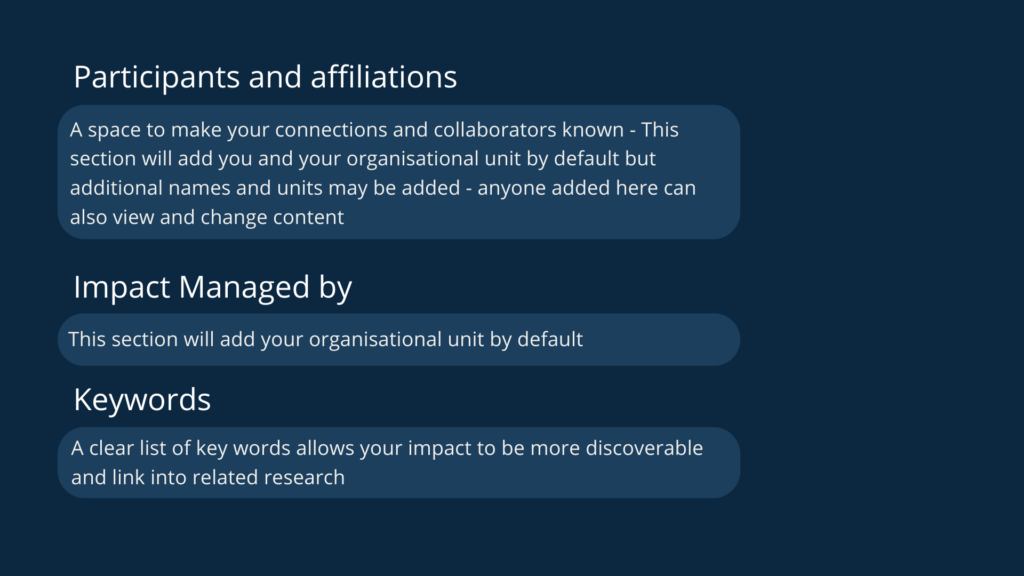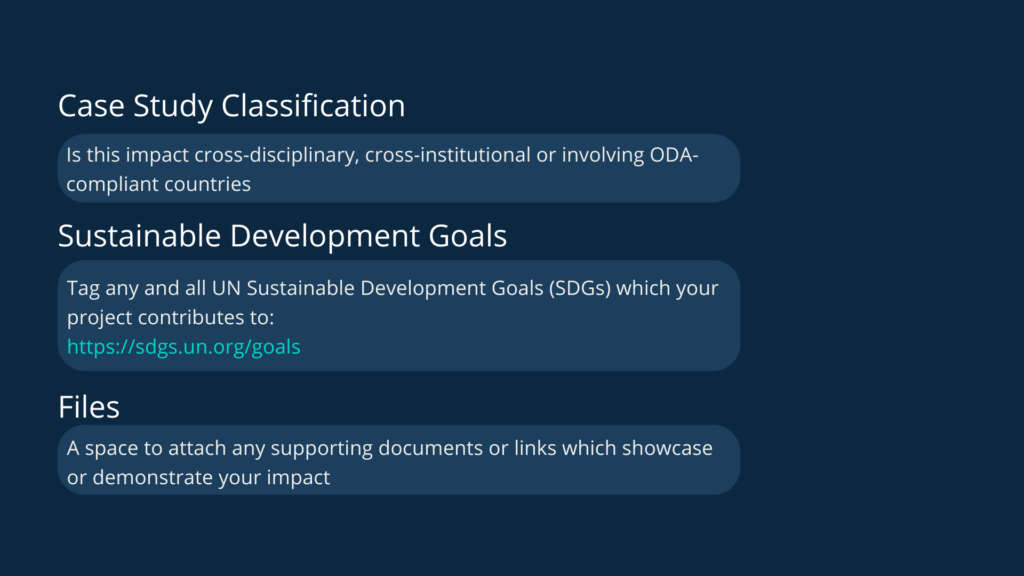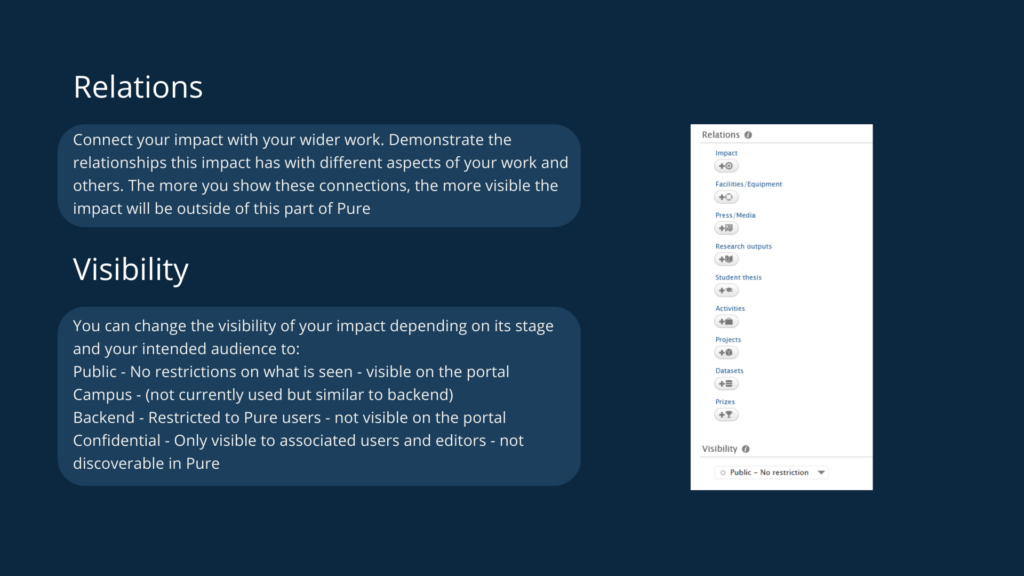Keeping a timely record of impact work, and capturing evidence of such, allows impact details to be documented in one place and for the value of the changes to be more demonstrable and visible. Pure has a module to record impact where entries can be connected to other aspects of your work, such as activities and outputs.
The activities module is where you should record the engagement and knowledge sharing activites that are conducted in the process of sharing research findings with non-academic audiences. A resource on defining research impact can be found here.
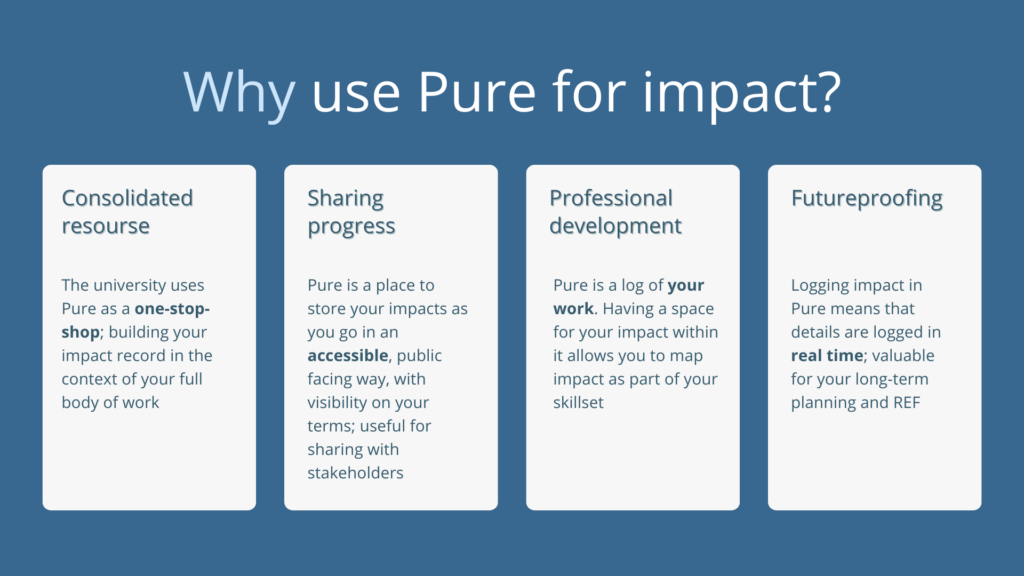
What’s involved?
- Building your impact story: Describing what the impact is/was, inputting who it affected, building narratives ways that are accessible to a lay audience.
- Logging the evidence of impact: Adding evidence (can take a variety of forms) to support links between your research and the impact and the key impact claims. Evidence can include, files, links (we advise including date-stamped hard copies), emails, statements, etc. Our resource for evidencing impact can be found here.
- Adding detail: Such as participant information, relations, activities etc. Including contextual information to make clear the significance of quantitative data.
- Working document: Pure entries can be updated as projects happen, making them incremental, less labourious tasks with maximum visibility.
- Public facing: Impact will be one of the visible content types in the externally facing, searchable Pure Portal and will be visible as part of your Pure profile.
When to record impact in Pure
- When you are awarded funding which includes an impact element
- When you anticipate benefit to society resulting from research or engagement
- When impact has arisen (directly or indirectly) from your research
Each section of the impact element in Pure is described in the gallery below:
